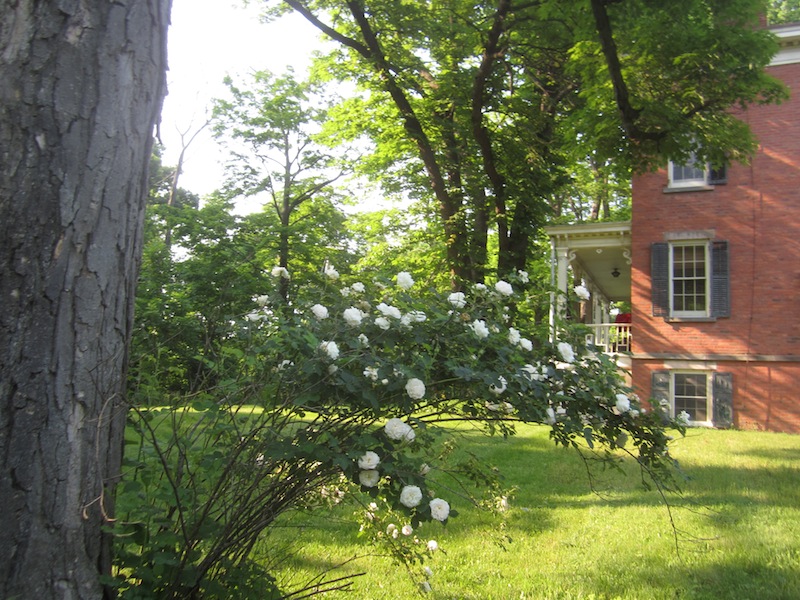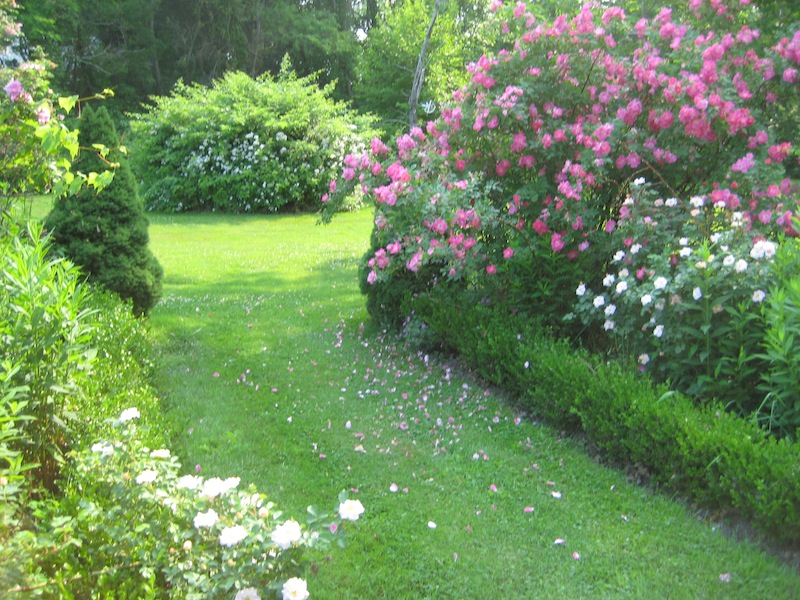Imagine finding a dozen innocent, living things of great fragrance and beauty. Your first impulse is to cut off their heads then bring them home to be put on display, or present to your lover. Unless you happen to be a barbarian running into the vestal virgins whilst sacking Rome, or studying the sacrificial customs of the ancient Maya we are most likely talking about roses. I am the type of gardener who infinitely prefers enjoying my flowers in their natural state as opposed to cutting them in their prime. My experience growing hybrid tea roses however, really encouraged me to get in touch with my inner Visigoth.
The gardens at Schoolfield began with me restoring and adding to the beds and plantings that were already there and grew haphazardly outwards from them. After a bit, as my self confidence and knowledge grew, I decided to create a new garden from scratch and thought about what kind I wanted. A dozen years earlier I had stumbled upon Queen Mary’s Rose Garden in Regents Park.

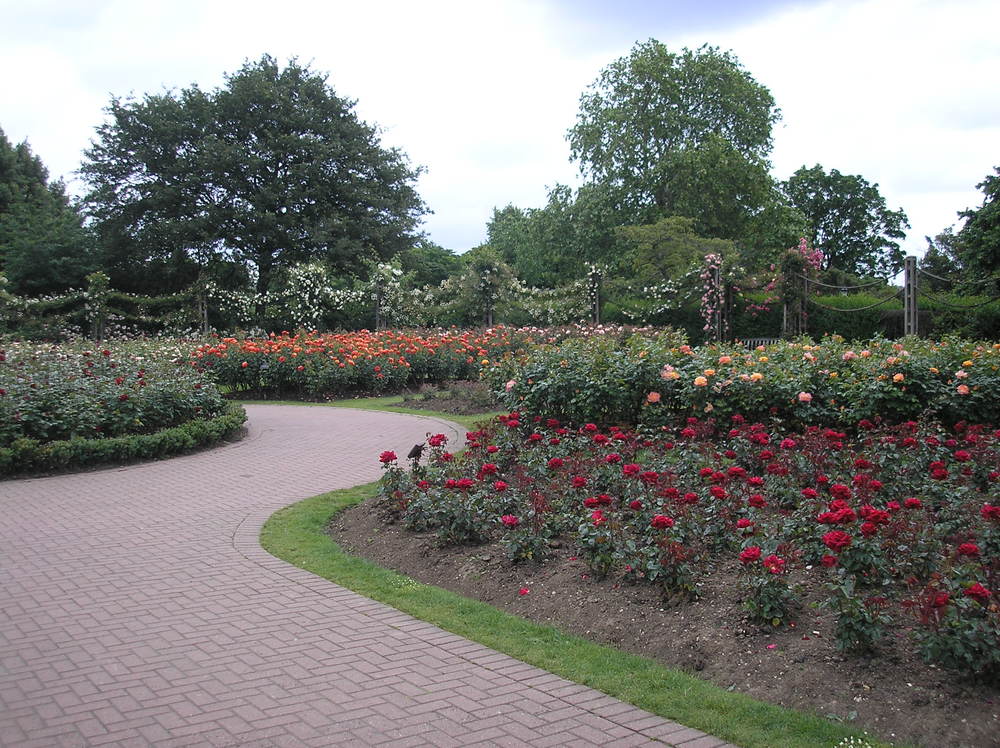
Therein lied the problem. Roses do not need constant attention, but they need consistent attention, which is what I did not provide. My constant ministrations of the first year were replaced with short bursts of intense activity followed by forgetting to feed and water and protect against pests regularly the next. The results were definitely a little less than spectacular. Tree roses have to be overwintered in a sheltered spot, which I did, but they still suffered from a high mortality rate. After a year or two of replacing the ones that didn’t make it through, I gave up on them all together. The hybrid teas suffered from black spots and lost many leaves. It did serve to make their luscious blooms really stand out, which was nice. They however in turn became beacons for hordes of japanese beetles which devoured them. I soon learned to swiftly clip any buds that approached maturity and brought them inside, before I came back the next day to find them ravaged by the beetles. They were mercy killings. The bourbons and David Austin Heritage roses held their own, but turned out to be planted too close together. The bushes, competing with each other for nutrients and with out heavy fertilization, became spindly. As the hybrid teas followed the tree roses’ lead and began to die here and there over the next couple of years, I didn’t replace them. Other, easier to care for plants entered the beds, and eventually the rose garden was no more.
Fortunately, the story does not quite end there. The rose’s allure remained very strong and I couldn’t quite get having them out of my head. While driving down the westside highway one day, I noticed low rose bushes not only growing in the median between the uptown and downtown lanes, but positively thriving. Image from nycgarden.blogspot.com If they could do that surrounded by the unrelenting heat, constant exhaust, and road salt, I thought they would probably hold their own under my benign neglect. After a little research and through some friendly folks in the parks department, I learned they were Meidiland roses. I tentatively tried some in a couple spots in my garden. To my immense relief and pleasure, they did well.
Image from nycgarden.blogspot.com If they could do that surrounded by the unrelenting heat, constant exhaust, and road salt, I thought they would probably hold their own under my benign neglect. After a little research and through some friendly folks in the parks department, I learned they were Meidiland roses. I tentatively tried some in a couple spots in my garden. To my immense relief and pleasure, they did well.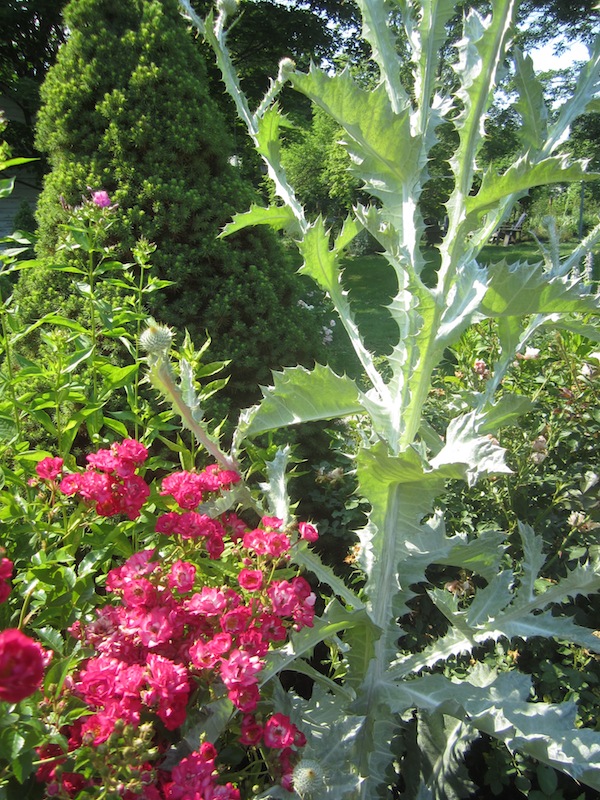 red meidiland rose growing next to thistle Encouraged, I began to look for and plant other varieties that might prove hardier, more resilient or naturally cantankerous than those first pioneers who were ill suited to my laissez faire approach to their care. Some did not live up to their reputations. The rugosas tended not to do as well as they were supposed to and have petered out, while other types have exceeded all my expectations. I planted a William Baffin Rose under a tall metal trellis for the rambler to grow on. It took off, eventually enveloping the tuteur and pulling it out of the ground. Now it is a large, upright but loosely free-form shrub that never fails to impress when it is in bloom.
red meidiland rose growing next to thistle Encouraged, I began to look for and plant other varieties that might prove hardier, more resilient or naturally cantankerous than those first pioneers who were ill suited to my laissez faire approach to their care. Some did not live up to their reputations. The rugosas tended not to do as well as they were supposed to and have petered out, while other types have exceeded all my expectations. I planted a William Baffin Rose under a tall metal trellis for the rambler to grow on. It took off, eventually enveloping the tuteur and pulling it out of the ground. Now it is a large, upright but loosely free-form shrub that never fails to impress when it is in bloom. 
Madame Plantier rose in foreground and distance Its shape and leaves still look ok when not in bloom, which is a plus. Also the blossoms are long gone before the japanese beetle season strikes. In a move of tough love, I thinned out the groups of the bourbons and Heritage roses. Aside from the pangs of guilt of eliminating the weakest bushes, the result was the survivors do have not compete with each other as much, and are thriving.
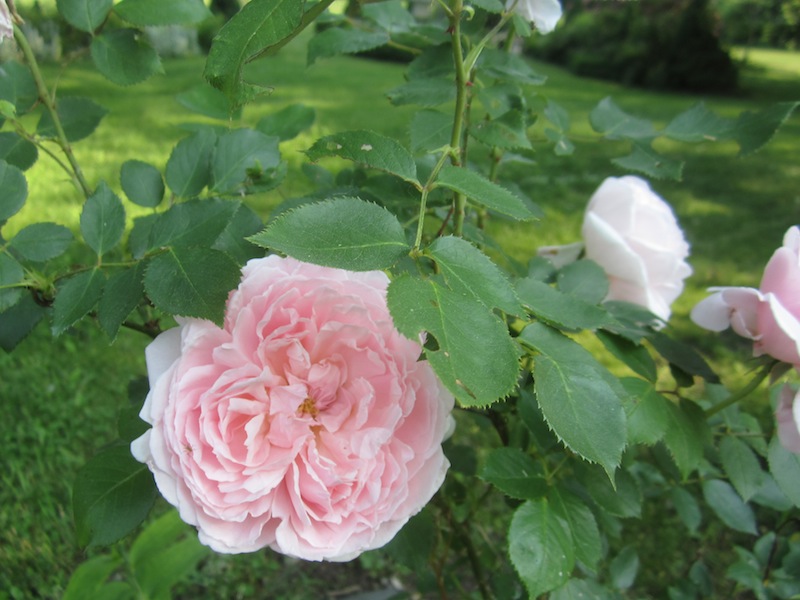
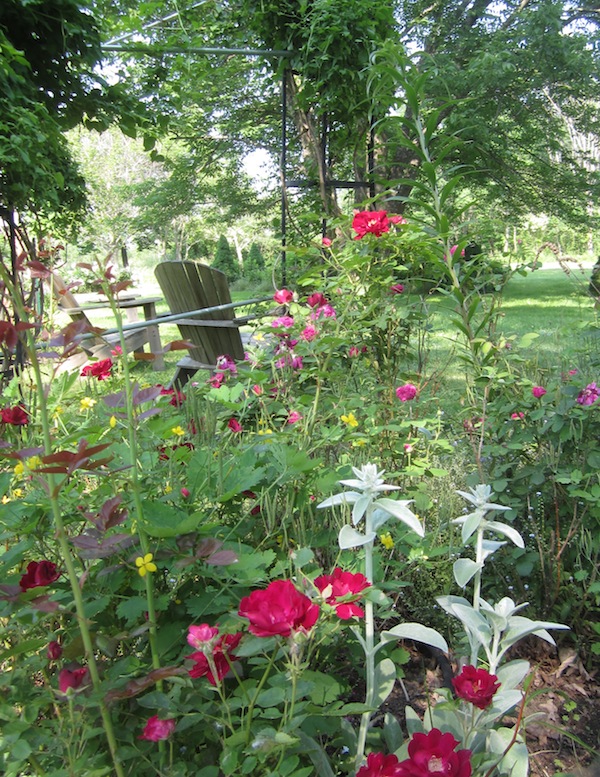
Aside from some encouragement at the beginning of the season and occasional judicious pruning, they are quite happy to be left alone for the most part. In turn I seldom feel compelled to make any hasty sacrifices of their blooms. Its much better for all concerned.

